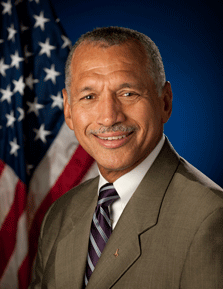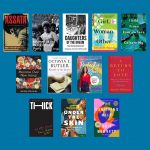 Maj. Gen. Charles Frank Bolden, Jr., (USMC-Ret.) is the 12th Administrator of the National Aeronautics and Space Administration.
Maj. Gen. Charles Frank Bolden, Jr., (USMC-Ret.) is the 12th Administrator of the National Aeronautics and Space Administration.
It’s appropriate for NASA that the theme of this year’s Women’s History Month celebration is “Women of Character.” The women of our nation’s space program have made countless sacrifices to advance our nation, and their expertise and dedication have been crucial to our many successes in exploration.
I was fortunate to fly to space twice – STS-31 and STS-45 – with the distinguished Dr. Kathryn Sullivan, now the NOAA Administrator, and on my final Shuttle mission – STS-60, the historic first joint U.S.-Russian Shuttle mission – I had Mission Specialist Dr. Jan Davis on my crew. From these flights, we formed strong bonds that we will share all our lives. The addition of women to our astronaut corps has only enhanced and strengthened what we can accomplish.
Our latest group of Astronaut Candidates is 50% women, the highest percentage ever, and we hope to maintain that level of representation well into the future. It is no secret that the requirement that our earliest astronauts be military test pilots essentially precluded applications from women. It was not until 1983 that Sally Ride became the first American woman in space as part of a Space Shuttle Challenger mission, STS-7, to deploy communications satellites.
Since then, there have been 43 NASA women astronauts who have taken that leap and proven, as Amelia Earhart once said, that men and women were equal “in jobs requiring intelligence, coordination, speed, coolness and willpower.”
NASA is a major employer of women in science, technology, engineering and mathematics fields, and one of our priorities is inspiring young women to pursue an education and career in the STEM pipeline. The women of NASA to me represent character of the highest order. From those who lost their lives in the cause of exploration, to those who are working on tomorrow’s missions and training to travel to new destinations where we’ve never been, our future in space depends on them.
There were a lot of female pioneers before the space age, and I like to think that the great aviator, Amelia Earhart, whom I quoted earlier, was alive today, there is a good chance she would be a NASA astronaut. She was the first person to fly solo across the Pacific Ocean, in 1935, and disappeared in 1937 attempting to fly around the world.
I say that she would have been an astronaut, not only because of her passion for breaking barriers of possibility in flight, but also for her determination to break barriers of exclusion here on Earth. At a time when women and minorities were rarely seen in the cockpit of an airplane, Amelia Earhart’s pioneering achievements broke the silence barrier, inspired a nation and paved the way for so many others who have followed in her path.
The spirit and curiosity of Amelia Earhart lives on through the women aeronautics researchers who continue to break new ground. These are women, for instance, working to find solutions to lowering the level of sonic booms so that someday, commercial planes can fly at supersonic speeds over land. They’re also working on technologies to improve air traffic flow and reduce delays and designing more aerodynamic aircraft to reduce fuel use and emissions. These women of NASA are not only making valuable contributions to our aeronautics program, they are an inspiration to others and are helping close the gender gap in the STEM professions.
You can read about many more NASA women at women.nasa.gov.
I’m grateful that if you look through the biographies of all the astronauts who have ever been, you’ll find not only Sally Ride, but also Mae Jemison, the first African-American woman in space; Peggy Whitson, who has logged 377 days in space, the most of any woman, and became the first woman to become the Chief of the Astronaut Office; and Suni Williams, holding the record for spacewalks by a woman and most accumulated spacewalk time by a woman. There you’ll also find Kalpana Chawla, Laurel Clark, Christa McAuliffe and Judith Resnick, who lost their lives on space missions. Among the newest entrants in those biographies, you’ll find our newest astronauts Serena Aunon, Jeanette Epps and Kate Rubins, who, along with the 4 women among the Astronaut Candidates of 2013, represent our future. There are many others.
I hope that girls reading this – particularly my three beautiful and talented granddaughters, Mikaley, Kyra and Talia – will feel that they can join the conversation about space and science and technology just as much as the boys; that they can take the classes and dream about careers in science, technology, engineering and mathematics if that’s where their passion lies and that they know they too can fly in space. If their dream is not fixed on flying, they can work on the design of future spacecraft; or turn the bolts on those spacecraft, or perhaps be the ones interpreting the scientific data that a spacecraft millions of miles away is sending back.
STEM, and space, are broad and inclusive. We invite everyone with a passion to explore to follow our missions and know it is possible for them to be part of aeronautics and space exploration.


